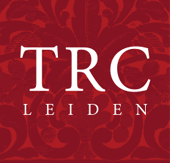Maltese lace is a form of bobbin, or pillow lace, which itself is a form of needle lace. Bobbin lace is the product of a modified weaving process that takes its name from the way it is made, namely using a series of bobbins on a lacemaking pillow. The warp threads on a loom are represented by the threads that hang straight down, weighed by the ‘passive’ bobbins. The weft threads on the loom are represented by the ‘worker’ or ‘weaver’ bobbins that go over and under the passive bobbins, so creating a piece of woven cloth.
The process to create bobbin lace mostly uses a pattern that is drawn on a piece of card (the so-called parchment or pricking card), which is attached to the pillow. The parchment has a series of holes literally pricked into it (with a pricker), following the lines of the design. Pins are put into the start of the design, from which enough threads with attached bobbins are hung. While interlacing the 'worker' and the passive threads, the lace maker follows the lines of the holes in order to create the desired design. While progressing, new pins are added to keep the developing weave in place.
There are two main types of bobbin lace, namely the continuous form, whereby the ground and motif are worked in one go, and the non-continuous form, whereby 'sprigs' (individual motifs) are made in one operation and then they are linked together with small braids or bridges (or ‘brides’) or by sewing the sprigs onto a mesh ground. Honiton lace is a good example. Maltese (bobbin) lace is a continuous form, whereby the motifs (sprigs) are made together with the braids or bridges that bring them together.
 Detail from The Lacemaker, by Johannes Vermeer.Actual evidence for the production of bobbin lace in Europe dates back to the 16th century, although there are vague written references and what might be representations of bobbin lace dating to the 15th century. One of the earliest known bobbin lace pattern books is called Le Pompe, which was produced by the Sessa brothers in Venice in 1557. This was quickly followed by other books, such as the Nüw modelbuch allerley gattungen däntelschnür so diser zyt in hoch tütschlanden geng und brüchig sind...erstmals in truck verfergket durch Rr. M. by Christoph Froschauer, which was printed in Zurich in 1561.
Detail from The Lacemaker, by Johannes Vermeer.Actual evidence for the production of bobbin lace in Europe dates back to the 16th century, although there are vague written references and what might be representations of bobbin lace dating to the 15th century. One of the earliest known bobbin lace pattern books is called Le Pompe, which was produced by the Sessa brothers in Venice in 1557. This was quickly followed by other books, such as the Nüw modelbuch allerley gattungen däntelschnür so diser zyt in hoch tütschlanden geng und brüchig sind...erstmals in truck verfergket durch Rr. M. by Christoph Froschauer, which was printed in Zurich in 1561.
From that moment onwards, there is considerable evidence in the form of actual, written and visual objects for the production of bobbin lace. Over the following centuries many different forms have been developed. These are often called after the place where they are said to have originated or where produced on a large scale. One of these local forms is Maltese lace.
Bobbin lacemakers have always been a popular subject for painters. One of earliest actual images of someone producing bobbin lace is by the Flemish painter, Maerten de Vos (c. 1534-1603), in a series of etchings called The Seven Ages of Man (c. 1580-85). The series is based on the planets and in the print called Venus, there is a young girl working on a lace pillow.
 Board with lace bobbins from different countries (TRC 2007.0494).
Board with lace bobbins from different countries (TRC 2007.0494).
In about 1670 Johannes Vermeer produced his famous The Lacemaker, now in the Louvre Museum in Paris. Caspar Netscher painted his Lacemaker in 1662 (Wallace Collection, London). Another Dutch master, Louis de Moni produced The Lacemaker with a Boy Blowing Bubbles in 1742. The painting is now housed in the Mauritshuis in The Hague, and Giacomo Geruti painted his Women Working on Bobbin Lace (private collection) in the mid-18th century.


